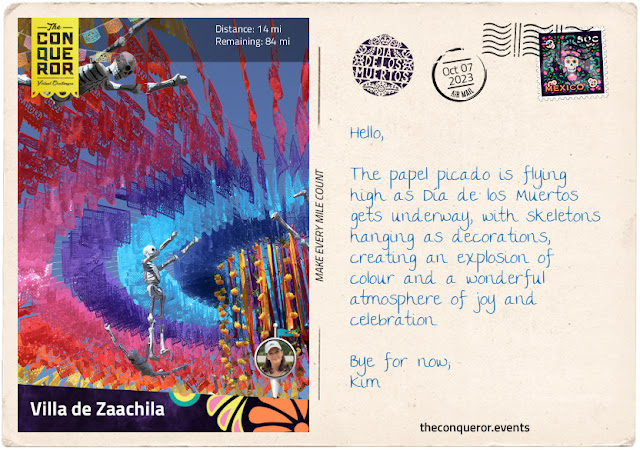Zimatlán de Álvarez
Zimatlán de Álvarez is closely intertwined with the history of the region. Before the arrival of the Spanish conquistadors in the 16th century, the region was inhabited by indigenous Zapotec people, who were known for their advanced civilisation, developing writing systems, agricultural practices, the divinatory calendar, and impressive architecture.
When the Spanish conquistadors arrived in Mexico in 1521, they began their conquest of the Aztec Empire. As they established Spanish rule, they used the same tactics and strategies to expand their territories over Oaxaca, which Zimatlán is part of. With colonisation came the assimilation of the Zapotec people into Spanish culture, where Christianity and European customs were introduced. With time, the cultural and religious changes within the Zapotec civilisation merged with the beliefs and practices of Catholicism.
This influence is present in the celebrations of Día de los Muertos, where the pre-Columbian indigenous practice of honouring deceased ancestors is fused with All Saints’ Day, a Christian tradition dedicated to honouring Christian saints who don’t have their own specific feast days. Over time, these two traditions merged, blending indigenous beliefs with Catholic practices. As a result, Día de los Muertos celebrations shifted from August to coincide with All Saints' Day on 1 November, reserved for honouring children who passed away and All Souls' Day on 2 November, reserved for deceased adults.
A short distance east of Zimatlán is Cultivos El Viejo, a flower field where marigolds are cultivated in preparation for Día de los Muertos. The marigolds, known as cempasúchil in Nahuatl (the language of the Aztecs), are native to Mexico and grow in abundance. It has vibrant orange and yellow colours with a strong and distinctive fragrance. Used to decorate altars and gravesites, the flower’s bright hues are believed to illuminate the path for the spirits to return, while the scent is meant to entice the spirits to visit the ofrendas (altars) created by their families.
A touching Mexican legend tells the story of a young couple's love being cut short following the young man's tragic death. To honour him, the heartbroken girl created an ofrenda adorned with marigolds, believing their vibrant colours and fragrance could guide his spirit back to the living world.
While setting up the ofrenda, a tiny, iridescent hummingbird appeared, representing her lost love's soul. The hummingbird returned each Día de los Muertos, sipping marigold nectar and comforting her. Over time, she found solace, knowing their love transcended death.
This legend symbolises the enduring love between the living and the deceased during Día de los Muertos. Marigolds and hummingbirds serve as a bridge, allowing the living to cherish and celebrate the memories of those who have passed away.
As I stroll through the marigold fields, the air is thick with the sweet scent of the flowers. I bask in its gorgeous colours as I reflect on the traditions that have embraced these flowers for generations.



Comments
Post a Comment